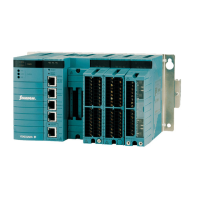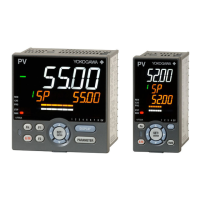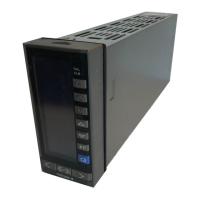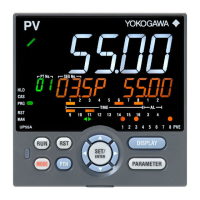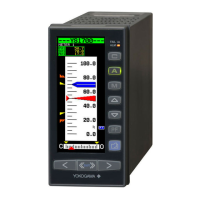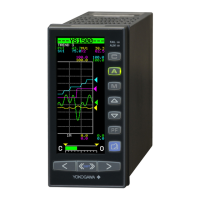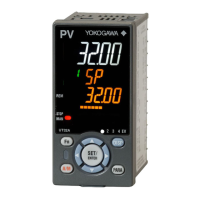App-13
IM 04L20A01-01E
Appendix
App
Appendix 4 Types of Data Created on the FX100
and Their Uses
This section explains how to use data created on the FX100.
Data Acquisition to When Saving to the External Storage Medium Display Using
the Internal File Name.Extension
*1
Format FX100 DAQ Appli.
Memory
Display data Yes Mddhhmma.DDS BINARY (Undisclosed) Yes Yes Yes
*1*2
Event data Yes Mddhhmma.DEV BINARY (Undisclosed) Yes Yes Yes
*1*2
Report data Yes Mddhhmma.DHR (hourly) ASCII (see appendix 5) Yes Yes Yes
Mddhhmma.DDR (daily)
Mddhhmma.DWR (weekly)
Mddhhmma.DMR (monthly)
Manual sampled data Yes Mddhhmma.DMN ASCII (see
appendix 5
)- - Yes
TLOG data Yes Mddhhmma.DTG BINARY (Undisclosed) - Yes Yes
*2
Setup data Yes (specified string).PNL BINARY (Undisclosed) Yes Yes -
Alarm summary Yes - - Yes Yes Yes
*2
Message summary Yes - - Yes Yes Yes
*2
Screen image data No Mddhhmma.PNG PNG (general format) - - Yes
DAQ: DAQSTANDARD
Appli: Application program
*1 If the data format is converted using DAQSTANDARD, it can be viewed on common software
applications such as Microsoft Excel.
*2 With the communication function (optional), you can read data from the FX100 and view it
using application software.
File Name
• Mddhhmm denotes the date and time.
Mddhhmm of setup data and screen image data is the date and time the file was
created.
Mddhhmm of other data is the date and time the first data was sampled.
M: Month (1-9, X (October), Y (November), Z (December), dd: day, hh: hour, mm:
minute
• “a” denotes the last digit of the year (0 to 9).
However, “a” becomes a sequence number for the following case. It takes a value
between A and Z.
For example, if the acquisition of the display data is started and stopped, and started
again within 1 minute by pressing the START key, the two file names are the same up
to Mddhhmm (month, day, hour, and minute). In this case, the second file is assigned
the sequence number A.
Example: 70112563.DDS
7011256A.DDS
Two display data files which sampling started on July 1st, 2003 at 12:56.

